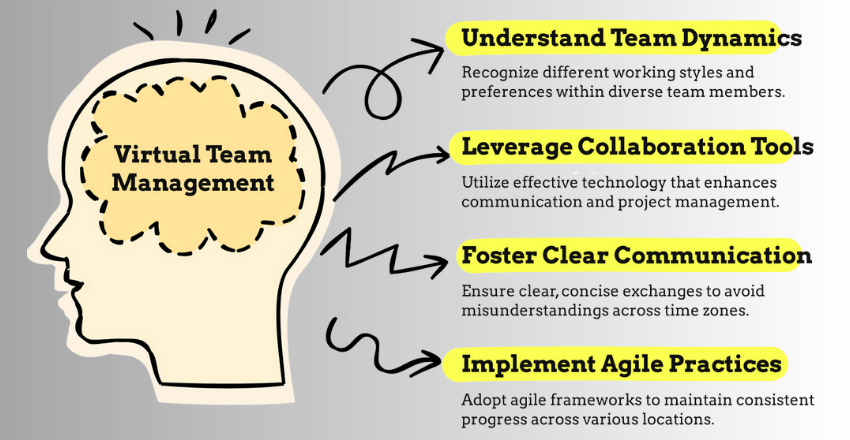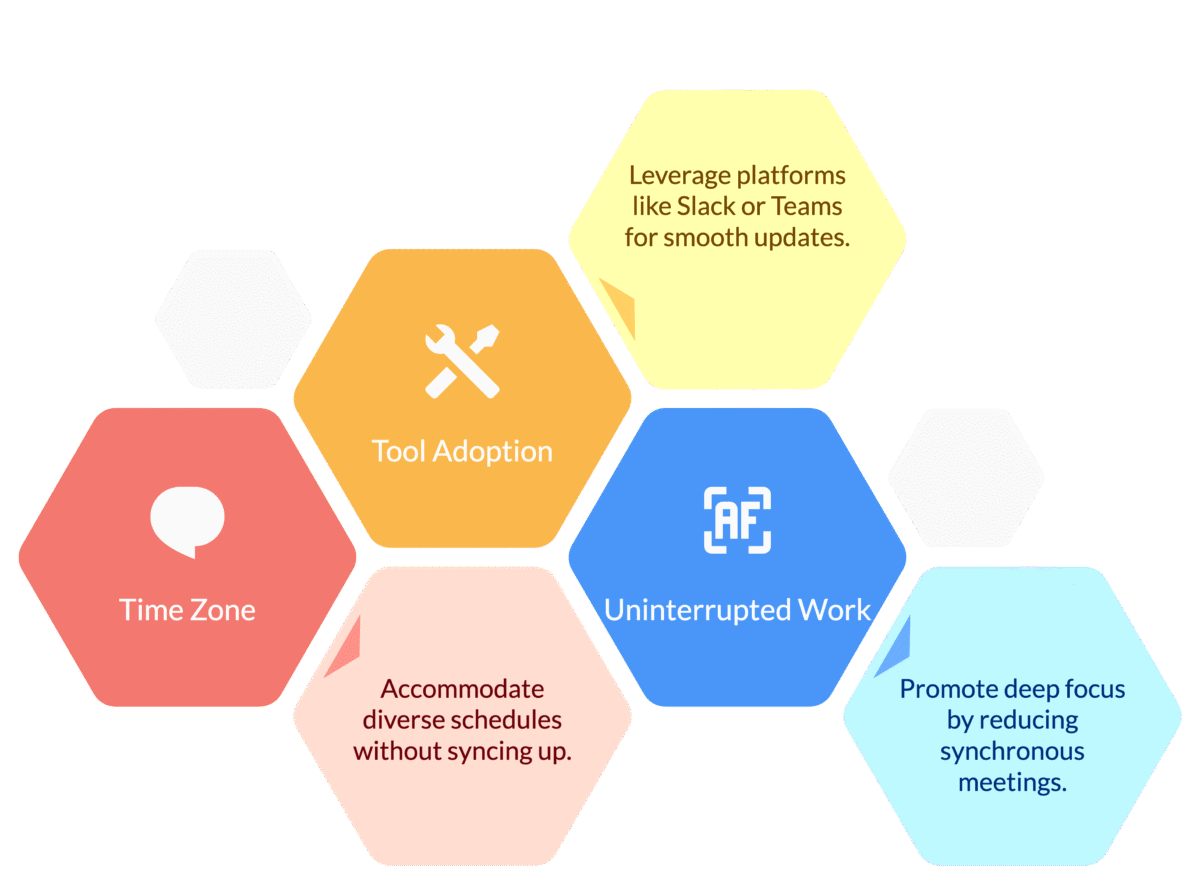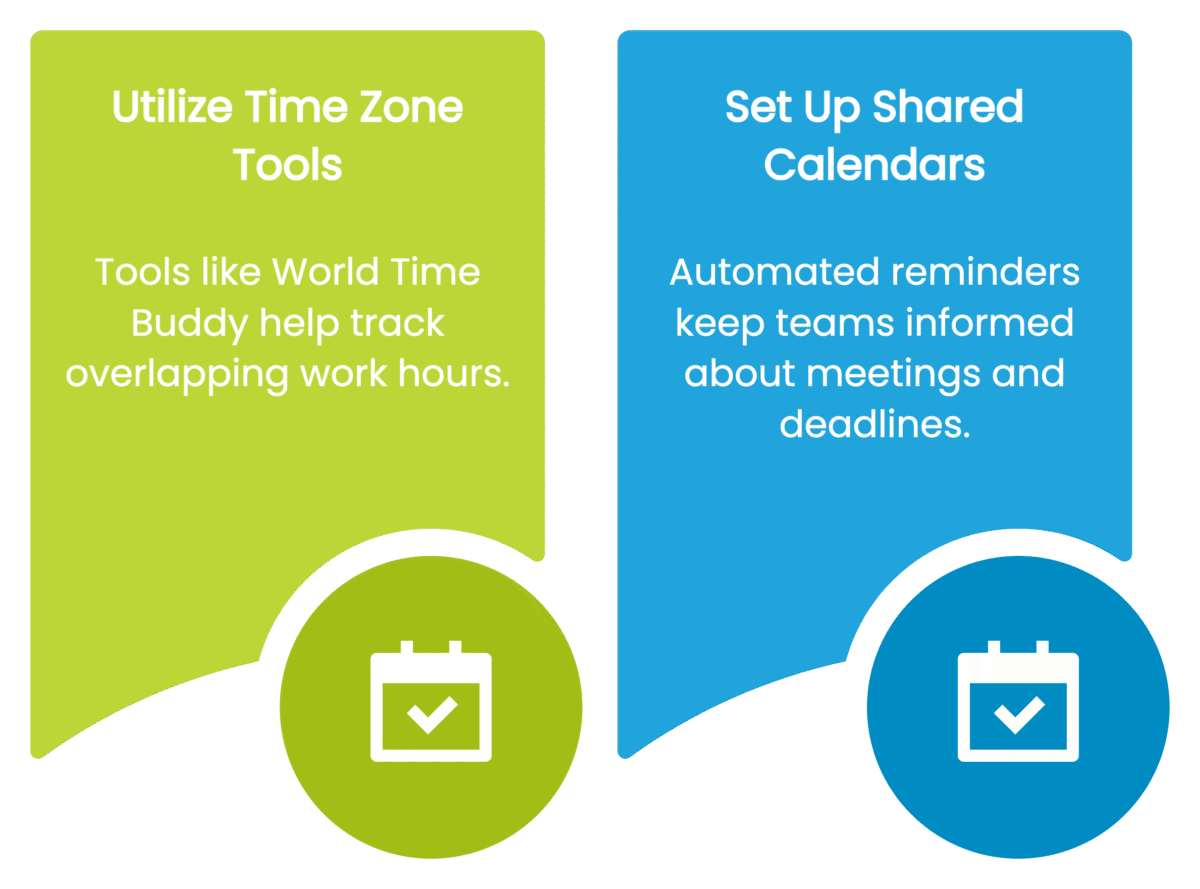
Top strategies for managing virtual software teams with agile sprints across global time zones
Managing virtual software teams across global time zones is no simple feat. Agile sprints, designed to drive continuous progress, demand coordination, collaboration, and clear communication—challenges that become more pronounced in a distributed team. A successful strategy is built on understanding team dynamics, leveraging the right tools, and fostering an environment where productivity thrives regardless of physical location.
Thank you for reading this post, don't forget to subscribe!Embrace Asynchronous Communication

Effective asynchronous communication stands as the backbone of remote teams. With team members scattered across the globe, real-time conversations often conflict with differing time zones, stalling productivity. A heavy reliance on synchronous meetings can disrupt workflows, especially for developers and engineers who need uninterrupted time to focus.
To combat this, adopt communication tools that facilitate asynchronous work, such as Slack, Microsoft Teams, or Confluence. These platforms allow for smooth information exchange without requiring all members to be online simultaneously. Create structured channels where team members can post updates, provide feedback, and share insights.
Encourage a culture of well-documented communication. A detailed meeting agenda or sprint updates, shared in advance, helps team members respond when it aligns with their schedule. This strategy prevents bottlenecks caused by time zone differences and ensures no one is left behind when it’s time for decision-making.
Overlap Time Zones for Key Meetings
While asynchronous communication plays a crucial role, there will still be instances where face-to-face collaboration is needed. For those critical meetings—such as sprint planning, retrospectives, or sprint reviews—finding a reasonable overlap in working hours is vital.
The key here is to identify a time that works for the majority, rather than trying to accommodate everyone at once. Flexibility is important. Some teams may rotate meeting times to distribute the inconvenience equally, ensuring fairness when dealing with time zone challenges.
When scheduling, aim for a small window during which team members across different locations can overlap, even if only for an hour. This will allow for meaningful discussion, clarity in decision-making, and an opportunity to align priorities.
Build Cross-Time Zone Sprint Cadences
Setting a consistent sprint cadence is important, but the rhythm needs to be adaptable for global teams. The length of your sprints, typically 2 weeks for software development, should remain the same, but how teams interact during those sprints must reflect time zone realities.
Plan sprint ceremonies with full awareness of different team members’ work hours. It’s not feasible to expect a 24-hour working day for everyone, so break down tasks into manageable chunks that can be completed within different time windows. Software developers in one time zone may work on specific features during their working hours, while others in different zones test or integrate the work once they come online.
Ensure that milestones and deadlines are clear and reflect the team’s geographical diversity. While the entire team doesn’t need to meet at once, a shared sprint board (like Jira or Trello) provides transparency so every member can see project progress in real time.
Leverage Time Zone Management Tools

A variety of tools can help teams manage time zone differences more effectively. World Time Buddy and Google Calendar are excellent tools for keeping track of overlapping working hours. Setting up time zone-specific calendars can help your team better organize meetings, ensuring no one misses key discussions.
In addition to managing time zones, automated reminders ensure team members are kept on track for sprint deadlines and meetings. A shared calendar with automated updates can keep everyone informed of upcoming milestones and sync times for cross-time zone meetings. This minimizes confusion and prevents missed communication, which could delay project timelines.
Foster a Sense of Shared Ownership and Responsibility
Across global teams, one challenge often faced is maintaining team cohesion. This becomes even more complex when time zone differences create a sense of disconnection. Despite not sharing an office, every member should feel personally accountable for sprint goals.
Promote a culture where team members are empowered to take initiative, voice concerns, and take responsibility for deliverables. Use agile frameworks to structure team processes, ensuring everyone is aligned on tasks and roles. Regularly revisit sprint goals to keep them fresh in everyone’s mind and hold individuals accountable for their contributions.
Encourage daily or weekly stand-ups, where everyone provides short updates about their progress and challenges. Even if the meeting occurs asynchronously, having team members record their updates at specific times allows everyone to track progress. Teams should also regularly revisit the definition of done (DoD) and continuously assess their own performance.
Optimize Collaboration Through Documentation

Documentation is essential, particularly when managing remote teams across different time zones. Agile relies heavily on continuous delivery and collaboration, which requires transparency. Keeping track of product specifications, user stories, code reviews, and sprint updates in a centralized location makes it easier for teams to stay on the same page.
Create clear, concise documentation on each sprint’s scope and the expectations surrounding deliverables. In a virtual environment, the documentation becomes even more important, as it provides a reliable point of reference. Tools like Confluence, GitLab, or Notion allow developers to document their workflows, share insights, and collaborate in real-time.
Furthermore, team members can leave detailed feedback in these documents for others to review at their convenience. This allows the flow of information to remain uninterrupted, even when individuals are working in different time zones.
Empower Local Leads to Drive Success
When managing distributed teams, there are clear benefits to assigning local leads who can bridge the gap between different time zones. These leads serve as points of contact for specific regions and ensure that decisions can still be made promptly.
Local leads may not participate in every meeting, but they can ensure that team members in their region have what they need to succeed. They can act as liaisons, helping with cross-functional communication, escalating urgent issues, and fostering a strong sense of local responsibility.
Empower leads with the ability to make decisions quickly within their areas of expertise. This decentralizes decision-making and allows the team to keep moving forward without waiting for approval from a central authority that may be in a different time zone.
Invest in Cloud-Based Development Environments
To ensure continuous development across global teams, cloud-based tools are essential. These tools enable all team members to access the same codebase, regardless of their geographical location. It reduces the friction caused by differing work hours, allowing team members to collaborate on features and fixes in real-time.
Cloud-based integrated development environments (IDEs), such as GitHub, GitLab, and Bitbucket, allow developers to work on code without worrying about compatibility issues. Additionally, continuous integration tools like Jenkins or CircleCI enable automated testing, ensuring that changes to code are continuously reviewed and integrated into the main branch.
This setup allows for parallel development, so one team can continue working on a feature while another tests or deploys updates, all without interrupting the sprint cycle.
Encourage Flexibility and Adaptability
The nature of managing virtual software teams means flexibility is a must. As new challenges arise—whether they’re technical, logistical, or cultural—teams must remain adaptable.
Encourage your team to maintain a flexible approach to work. Allow for staggered hours if necessary to accommodate personal preferences, while still making sure sprint goals and timelines are respected. This promotes a healthy work-life balance, increases morale, and prevents burnout.
Remember, Agile thrives on adaptability. Your team’s ability to pivot and respond to emerging challenges will directly impact the success of sprints. Cultivate a mindset of growth and problem-solving, with the understanding that shifts in strategy may sometimes be necessary.
Managing virtual software teams across global time zones requires strategy, planning, and cultural sensitivity. The key is creating processes that balance synchronous and asynchronous work while ensuring transparency and accountability. By embracing tools that optimize communication and collaboration, empowering local leads, and fostering a sense of ownership, teams can successfully navigate the complexities of time zone differences.
Agility doesn’t just apply to development processes—it applies to the way you manage your teams. With a well-thought-out approach to virtual team management, your global teams can execute agile sprints efficiently and continue to deliver exceptional results, no matter where they’re based.


